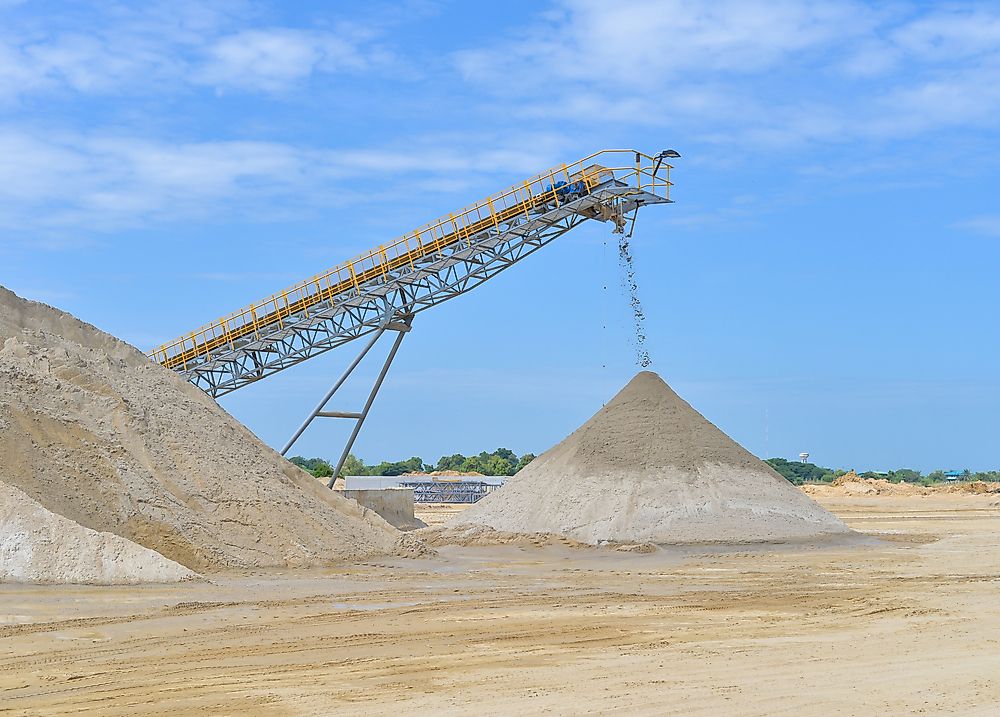What Are The Negative Effects Of Sand Mining?

Sand mining is the process of extracting sand from an open pit, sea beaches, rivers and ocean beds, river banks, deltas, or inland dunes. The extracted sand can be used for various types of manufacturing, such as concrete used in the construction of buildings and other structures. The sand can also be used as an abrasive or can be mixed with salt and applied to icy roads to reduce the melting point of ice.
As populations grow and rates of urbanization increase, the demand for sand needed in construction also increases. These high levels of demand have often led to the use of unsustainable sand extraction processes and illegal sand mining. Although most jurisdictions have legal limits on the location and volume of sand that can be extracted, illegal sand mining is flourishing in many parts of the world. Such activities have a negative effect on the surrounding ecosystem. These adverse impacts of sand mining are explained below.
1. Sand Mining Causes Erosion
Unregulated mining of large volumes of sand along beaches leads to their erosion. Sea beaches are usually formed by the balanced action of depositional and erosional forces. Although this balance is naturally maintained, humans interfere causes excessive erosion and thus the retreat of beaches. By removing too much sediment from rivers, sand mining also leads to the erosion and shrinking of river banks. Deltas can recede due to sand mining. All of these destructive effects of sand mining ultimately lead to the loss of fertile land and property. It also destabilizes the ground and causes the failure of bridges, dikes, and roads.
2. Sand Mining in Beaches and Sand Banks of Rivers Harms Local Wildlife
Beaches are located at the intersection between ocean and land. As such, beaches are home to a variety of species like crabs, snails, and turtles. When sand is mined in beaches, it disturbs the wildlife living in the beach ecosystem. For example, turtles such as the Olive ridley sea turtle arrive at beaches to dig nests in the sand and lay their eggs. After laying their eggs, the turtles cover them with sand to protect the nests from predators. When the hatchlings emerge, they move across the beach and enter the sea. However, when sand mining occurs in turtle nesting habitats, it leads to the loss of nesting sites. Therefore, sand mining can be a factor responsible for the disappearance of a species.
The negative effects of sand mining on local wildlife are clearly visible in the case of gharials, the fish-eating crocodiles, in India. Sandbanks are essential for the critically endangered gharials to build nests and bask in the sun. Unfortunately, despite efforts made to conserve the species, illegal sand mining in the range of the gharials has destroyed the much-needed sandbanks in their habitat. The species is now nearly extinct.
3. Sand Mining Destroys Aquatic Ecosystems
The ill effects of sand mining on wildlife are not confined to beaches and sandbanks, but also include underwater ecosystems. When sand is mined from seabeds or river beds, it can create create turbidity in the water. The machines and human disturbance induced by such processes can also adversely impact aquatic wildlife. The turbidity can create a barrier that prevents sunlight from entering the water, which is harmful to corals that need sunlight. Fish may also die-off due to a lack of food and oxygen in the turbid waters. Thus, the entire aquatic system may fail due to sand mining. The fishing industry that is dependent on such waters will also suffer great economic losses.
4. Sand Mining Makes Areas More Prone to Flooding
Beaches, dunes, and sandbanks act as barriers to flooding. When sand mining removes such barriers, areas near the sea or river become more prone to flooding. As a result, beachside communities in areas subjected to indiscriminate sand mining are thus more vulnerable to the forces of nature.
5. Sand Mining Adversely Affects Tourism
Sand mining destroys the aesthetic beauty of beaches and river banks, and also makes the ecological system in these areas unstable. If such beaches and riverside areas are popular tourist destinations, then the tourism potential of such areas will be lost.











